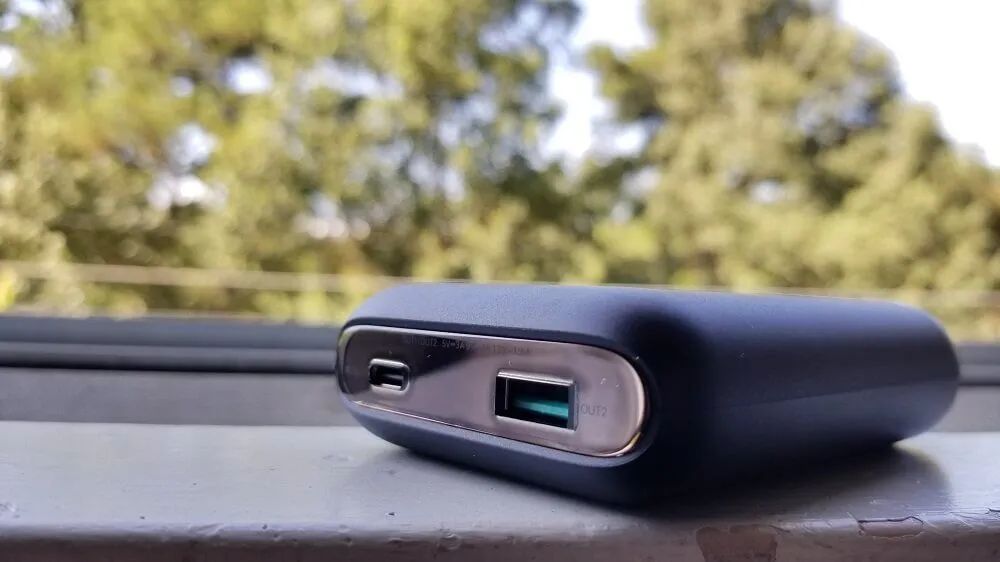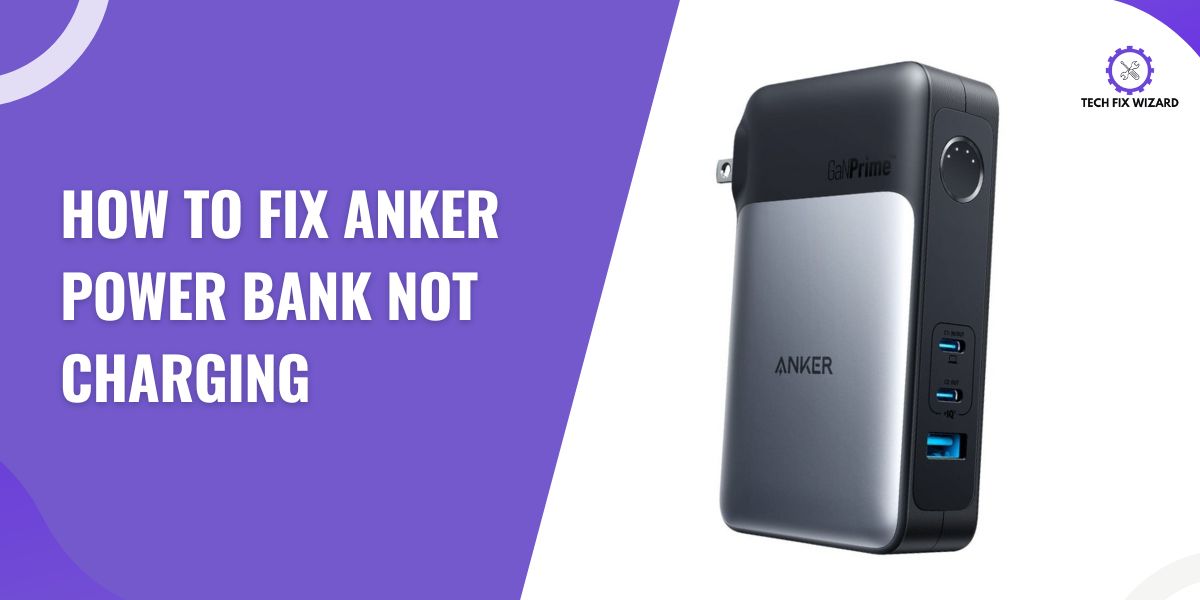Anker power bank is one of those handy devices we rely on to keep our gadgets charged, can sometimes run into problems.
It can be quite frustrating when your power bank won’t charge itself or your devices, especially when there’s still power left.
In this article, we’ll guide you through solving two common issues: Anker Power Bank not charging itself and failing to charge your devices.
So, let’s get into it!
Contents
- 1 Anker Power Bank Not Charging Itself
- 2 1. Initial Checks
- 3 2. Check the Power Outlet
- 4 3. Inspect the Cable
- 5 4. Power Bank-Specific Checks
- 6 5. LED Indicators
- 7 6. Reset the Power Bank
- 8 7. Environmental Factors
- 9 8. Firmware Updates
- 10 Anker Power Bank Not Charging Connected Devices
- 11 1. Initial Checks
- 12 2. Confirm Device Compatibility
- 13 3. Device-Specific Checks
- 14 4. Test with Other Devices
- 15 5. Power Bank-Specific Checks
- 16 6. Environmental Factors
- 17 FAQs
- 18 1. How do I reset my Anker power bank?
- 19 2. What should I do if my power bank is not charging?
- 20 3. How do you reboot a power bank?
- 21 4. Why is my Anker battery blinking?
- 22 5. How do I reset my Anker Bluetooth?
Anker Power Bank Not Charging Itself
In some cases, you may find your power bank struggling to charge itself. There could be various reasons behind this issue.
By following the systematic steps and checks provided below, you can identify and address the common issues that may be preventing your power bank from charging effectively.
1. Initial Checks
Before diving into complex troubleshooting, it’s crucial to conduct some initial checks to identify common issues that might be causing your power bank not to charge.
Firstly, ensure that the charging cable is securely connected to the power bank. Make certain that the cable is fully inserted into the power bank’s charging port, fitting snugly without any loose connections.
A secure cable connection is fundamental for effective charging.
Next, verify that the other end of the charging cable is firmly connected to a functional power source, such as a wall adapter or a USB port on your computer.
A loose or poorly connected cable at this end can also impede the charging process.
2. Check the Power Outlet
Next, confirm that the power outlet you’re using is functioning correctly.
Test it by plugging in and charging another device, like a smartphone or tablet. If this other device charges successfully, it indicates that the power source is operational.
To further investigate the power source, switch to a different charging adapter or USB port.
3. Inspect the Cable
A damaged or worn-out charging cable can significantly impact the charging process. Start by carefully examining the entire length of the cable, including the connectors, for any visible damage or fraying.
If you notice any physical damage, such as exposed wires or bent connectors, it’s imperative to replace the cable promptly. Damaged cables not only pose a risk but can also hinder efficient charging.
If damage is detected, replacing the cable with a new, undamaged one can resolve issues related to cable damage and ensure a stable and secure connection.
You Might Also Like: Power Bank Not Charging – 13 Steps To Get It Fixed
4. Power Bank-Specific Checks
Turning to the power bank itself, it’s essential to confirm its battery status. Check the power bank’s LED indicators or battery status, if available, to ensure there is enough charge left to power itself or charge other devices.
If the power bank is completely depleted, allow some time for it to accumulate enough power to operate properly.
A fully drained power bank may require some time to build up the charge before it can function effectively.
5. LED Indicators
The LED indicators on your power bank can offer valuable insights into its status. Check these indicators for any unusual patterns or behaviors.
Consult the user manual to understand what specific LED patterns mean in terms of the power bank’s status.
The user manual provides specific information about what each LED indicator pattern signifies. Understanding these patterns can help you diagnose and address any issues related to the power bank’s operation.
6. Reset the Power Bank
In some cases, power banks have a reset button that can help resolve issues. In the case of having the reset button follow the steps below:
- Locate the reset button. This is usually a small button or pinhole located on the side or back of the power bank.
- Press and hold the reset button for a few seconds. Some Anker power banks have a specific time that you need to press and hold the reset button, so it is best to check the user manual for your specific model.
- Release the reset button.
- Connect the power bank to a power source and try to charge it.
In the case of other Anker power banks especially Anker power core 20000, follow the steps below:
- Use the provided USB cable to link the Micro input and USB output ports.
- Allow the connection to remain for approximately 15 seconds.
- When the LED lights stop flashing or blinking, your Anker power bank has been successfully reset and is now operational.
- After the reset, power on your device and assess its performance.
7. Environmental Factors
The operating environment can have a significant impact on your power bank’s performance. Ensure that the power bank is within the recommended operating temperature range.
Extreme temperatures, whether too hot or too cold, can affect the charging and overall performance of the power bank.

Also Read: No Internet After Router Reset – 7 Effective Ways To Fix It
8. Firmware Updates
Some power banks may benefit from firmware updates to resolve charging issues.
Visit the manufacturer’s website to check for available firmware updates for your specific power bank model.
If updates are available, follow the instructions below to update the power bank’s firmware:
- Download the Anker PowerCore Firmware Update Tool for Windows or macOS. You can find the download links on the Anker website.
- Install the Anker PowerCore Firmware Update Tool on your computer.
- Connect your Anker power bank to your computer using a USB cable.
- Run the Anker PowerCore Firmware Update Tool.
- Select your Anker power bank from the list of devices.
- Click the “Update” button.
- Follow the on-screen instructions to complete the firmware update.
Anker Power Bank Not Charging Connected Devices
If you find yourself in a situation where your power bank isn’t charging the connected devices, you can follow the steps below.
1. Initial Checks
Let’s begin this troubleshooting process in the same way we did above, by starting with some initial checks to make sure that the connection and components are working as they should.
Ensure that the charging cable is securely connected to both the power bank and the device you intend to charge.
This means checking that the cable is firmly plugged into the power bank’s output port and the device’s input port. A loose or incomplete connection can hinder charging.
Inspect the charging cable for any visible damage and ensure it’s properly plugged into a functional power source.
Look for any signs of physical damage along the cable’s length, including fraying or exposed wires.
Ensure that the cable is securely connected to a working power source, such as a wall adapter or a functional USB port.
2. Confirm Device Compatibility
Confirm that the power bank is compatible with the device you intend to charge. This involves checking both the power bank’s specifications and the specific charging requirements of your device.
Some devices may have specific voltage or current requirements, and it’s essential to ensure that the power bank can provide the necessary voltage and current for your device’s charging needs.
Checking compatibility is crucial because using an incompatible power bank could result in inefficient charging or potential damage to your device.
3. Device-Specific Checks
Pay attention to your device’s charging port. Inspect it for any dust, debris, or physical damage that may be obstructing the connection between the device and the charging cable.
Use a flashlight to get a better view and ensure the port is clean and free of any foreign objects. If you find debris in the port, clean it gently using compressed air or a soft brush.
Be careful not to cause any further damage to the port during the cleaning process.
4. Test with Other Devices
To further diagnose the issue, try using the power bank to charge other devices. This step helps determine whether the problem is specific to one device or a broader issue.
Connect the power bank to different devices and observe if it successfully charges them. If it charges other devices but not the initial one, the issue may be with that specific device rather than the power bank.
5. Power Bank-Specific Checks
Confirm that your power bank has sufficient charge remaining to charge the device. Check the power bank’s LED indicators or battery status if available.
If the power bank’s capacity is critically low, you may need to charge it using a suitable power source before it can effectively charge other devices.
6. Environmental Factors
Consider the environmental conditions in which you’re using the power bank. Ensure that both the power bank and the device are within the recommended operating temperature range.
To maintain optimal charging conditions, avoid exposing the power bank and the device to extreme temperatures, direct sunlight, or sources of excessive heat or cold.
Keeping them in a temperate environment can help ensure efficient charging and protect the longevity of both the power bank and the device.
Our Hot Pick: Eufy Camera Not Connecting To WiFi – Here’s What To Do – 13 Quick Steps
FAQs
1. How do I reset my Anker power bank?
To reset your Anker power bank, look for a small reset button, usually located near the charging ports. Using a paperclip or a similar small, pointed object, press and hold the reset button for about 5-10 seconds.
Release the button, and your power bank should be reset. Refer to your specific model’s manual for exact instructions.
2. What should I do if my power bank is not charging?
If your power bank is not charging, start by checking the cable, power source, and the connections between the power bank, cable, and device.
Ensure compatibility with your device, and clean any debris from charging ports. If the issue persists, contact the manufacturer or refer to the user manual for troubleshooting steps.
3. How do you reboot a power bank?
Rebooting a power bank typically involves disconnecting any connected devices and then turning off the power bank.
You can often do this by pressing and holding the power button for several seconds until the indicator lights turn off. Then, power it back on by pressing the power button again.
4. Why is my Anker battery blinking?
A blinking LED indicator on your Anker battery typically indicates low battery status or that the power bank is currently charging. Consult your user manual for specific meanings of LED patterns, as they may vary by model.
5. How do I reset my Anker Bluetooth?
Resetting an Anker Bluetooth speaker or device may vary by model. Generally, you can initiate a reset by holding down specific buttons or combinations of buttons (such as volume buttons) for a few seconds until you see LED indicators respond accordingly.
Refer to your device’s user manual for precise reset instructions.

John Paul is a tech enthusiast dedicated to troubleshooting. He is passionate about fixing glitches, simplifying complexities, and empowering others in the digital realm.

